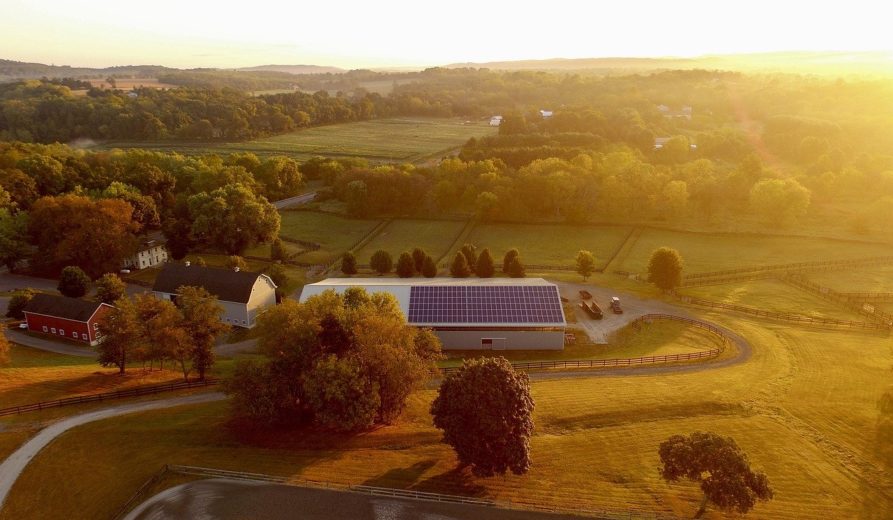
The Solar Revolution Driven By Farmers
We are reader-supported. When you buy through links on our site, we may earn affiliate commission.
Farms across the U.S. are turning to solar as a means to offset tough times spurred by the trade war. Will renewable energy in agriculture help communities deal with the scarcity of resources?
Environmental Forces and Trade Disputes
Razor-sharp margins, ecological forces and trade threats have led to a volatile environment for farmers. Now more than ever, environmental forces are shaping day-to-day operations. Droughts, extreme rain and forest fires contribute to the current unstable market state. Environmental effects have also made it harder to predict crop yields. This uncertainty, combined with increased costs, has led farmers to give up the profession or seek alternative sources of income.
If problems from climate change aren’t enough, the current trade war between the U.S. and China has created a perfect storm. The price of our nation’s most important crops — including corn, soybeans and wheat — has plunged to 2010 levels.
Farm bankruptcy filings are up more than 10% during the first half of this year, and there’s little sign the trade war will resolve. All of these factors have contributed to a new trend in agriculture across America. Farmers are taking crop or animal fields and converting them into solar fields. Some lease the land to power companies while others construct their own.
A broad trend for renewable energy is starting to favor solar over other forms of renewables, including wind and geothermal. Though this technology came onto the scene in the 1970s, the public is just beginning to understand the potential. Once installed, solar panels have less of a physical presence than wind turbines. Advances in solar are contributing to a higher return on investment compared to other forms of renewables.
The Benefits of Solar Fields
Farms with solar fields can receive a sizeable supplemental income. They can also generate two to three times more revenue for solar than a field full of crops or livestock. In drought-plagued areas, such as Australia and California, solar fields can significantly compensate for increased water prices. Farms in Australia have halved or eliminated their internal irrigation costs from diesel pumping stations.
A similar story is developing in California, with industrial farms building solar fields on cropland that has suffered in profitability. California has an ambitious goal of utilizing only green energy by 2045, and the state can’t reach this objective without a farming revolution. Luckily, there’s been an exponential increase in solar usage on California farms. In fact, a 20,000-acre solar project is underway, the largest ever devised in the U.S.
Another critical aspect driving this trend is the increase in solar panel efficiency. The efficiency of energy sources is measured based on the percentage of the source converted into usable electricity. Non-renewable sources, such as coal and natural gas, have a conversion up to 50% of their total potential energy into electrical output.
Renewable sources, such as geothermal and nuclear energy, convert nearly 100% of their potential into electric output. Solar, on the other hand, lags behind at 45%. Solar is incredibly powerful, but it’s challenging to capture the full spectrum of the energy behind the sun. As this technology continues to increase in efficiency, farmers can regain initial investments — and eventually profit — by selling electricity back to power companies.
Shifts in Future Farming Practices
For the last century, there has been a sizable shift in farming techniques. The era of small, family-owned farms belongs to the past. Modern technologies have exploded in popularity due to increasing demands for crops and mechanized practices. Industrial farms can produce more food at a lower price using economies of scale and GMO crop varieties. They’ve also raised concerns over sustainability.
Industrial farms use more pesticides than organic techniques. Plus, they often over-use the land. When you plow and plant in soil year after year, it loses the structure needed to maintain nutrients and moisture. Regenerative farming techniques used before our time are beginning to make a comeback. Methods such as conservation tillage and crop rotation ensure you rotate crops and don’t plow a field every year.
The solar revolution can increase the use of regenerative techniques in agriculture. Pastures converted into solar fields have time to regenerate and replenish soil nutrients. If the area is converted back to crop production, it will provide a larger, more sustainable yield.
Farming techniques are beginning to evolve with the advent of solar use. In densely populated countries, such as China and Germany, farmers are utilizing floating solar fields, which provide a hybrid of solar and farm areas. Floating solar fields are positioned above the crops and allow for sufficient sunlight to both the panels and nourish the plants. This system has the potential to be the farm of the future.
Solar panels in agriculture are here to stay. The use of this technology will allow the globe to achieve future energy goals. If we want to curb climate change, there’s a lot more we have to do. However, the mass adopted of solar by farmers proves we’re on our way to a sustainable future.
Share on
Like what you read? Join other Environment.co readers!
Get the latest updates on our planet by subscribing to the Environment.co newsletter!
About the author
Jane Marsh
Starting from an early age, Jane Marsh loved all animals and became a budding environmentalist. Now, Jane works as the Editor-in-Chief of Environment.co where she covers topics related to climate policy, renewable energy, the food industry, and more.





